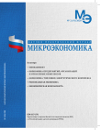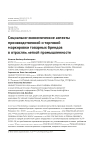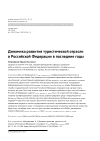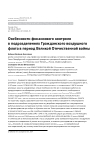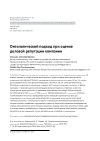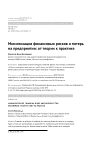Socio-economic aspects of production and trade labeling of product brands in light industry
DOI: 10.33917/mic-6.119.2024.55-70
This article examines the socio-economic aspects of the production and trade labeling of commodity brands in light industry in modern conditions. It is shown that since 2024, production and trade labeling has become mandatory for all participants in the Russian market. By this time, all manufacturers, importers and retailers must be registered in the Honest Mark system and will be required to transmit data on each concluded transaction. The requirements of GOST R 51201–98, which is a regulatory document that establishes the basic requirements for barcodes used in various sectors of the Russian economy, are analyzed. Several basic barcoding systems are considered, each of which has its own characteristics and specifications, namely: EAN-13, Code 39, QR codes, RFID codes and Data Matrix. The socio-economic aspects of the implementation of production and trade labeling of the world brands «A.L.C», «GAP», «Nike» are considered as industry examples. It is shown that brands with a well-known reputation usually monitor the quality of their products and try to preserve their reputation, so labeling in such cases acts as a guarantee of good quality.
References:
1. Hakobyan I.A. Labeling of goods by means of identification: protection of the domestic market of Russia and ensuring consumer safety. In the collection: Science Day. Blagoveshchensk, 2023. pp. 334–335.
2. Alyapkina V.G. The system of marking goods with control identification marks. A step into science. 2017;2:9–12.
3. Borovikova E.V. Improvement of tax administration based on the requirements for labeling goods. Taxes and taxation. 2020;5:61–75.
4. Vorobyov E.A., Ksenofontova O.L. Labeling systems for textile company goods. Collection of scientific papers of Russian universities «Problems of economics, finance and production management». 2024;54:47–50.
5. Guseva M.A., Andreeva E.G., Rogozhina Yu.V. The influence of modern labeling products on the quality of clothing Territory of new opportunities. Bulletin of the Vladivostok State University of Economics and Service. 2021;13(2):79–88.
6. Dolgaleva E.V., Shpak T.I. Marking of textile products. In the collection: Integration of science in the era of crisis: problems, solutions. Rostov-on-Don, 2022. pp. 299–300.
7. Zhuk A.A., Pisengolts M.V. On labeling of goods on the territory of the member states of the Eurasian Economic Union. Tax policy and practice. 2016;3 (159):34–37.
8. Zemlyakova S.N. Analysis of labeling procedures for light industry products. Innovative scientific research. 2021;3–1(5):56–62.
9. Ilyina E.A. Important information on labeling of light industry products. Product quality control. 2021; 7:18–20.
10. Ipatko L.I. Counterfeiting of light industry products: problems and solutions. Academic Bulletin of the Rostov branch of the Russian Customs Academy. 2018;2(31):12–16.
11. Kaplina E.S. Application of FRID technologies in marking goods with control marks with RFID tags for customs purposes. In the collection: Foreign economic activity: customs aspect, 2019. pp. 82–85.


